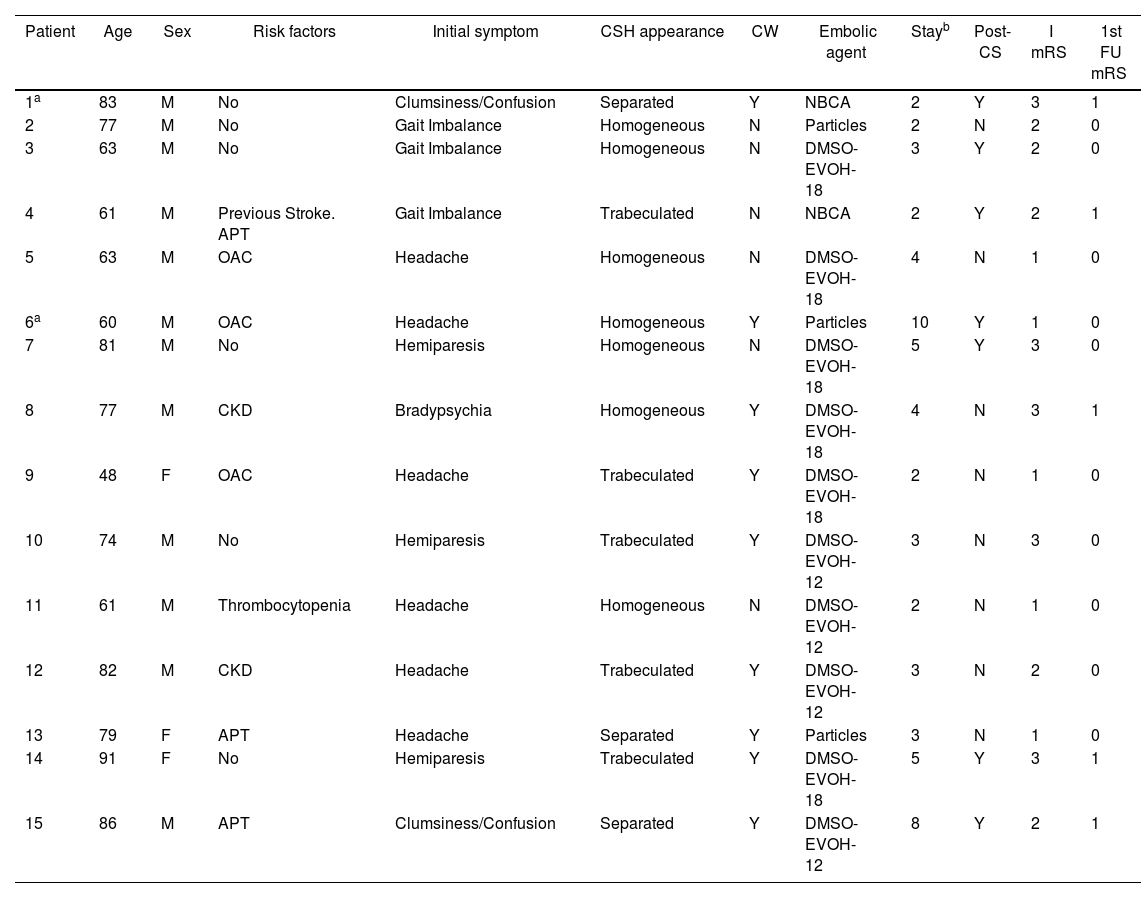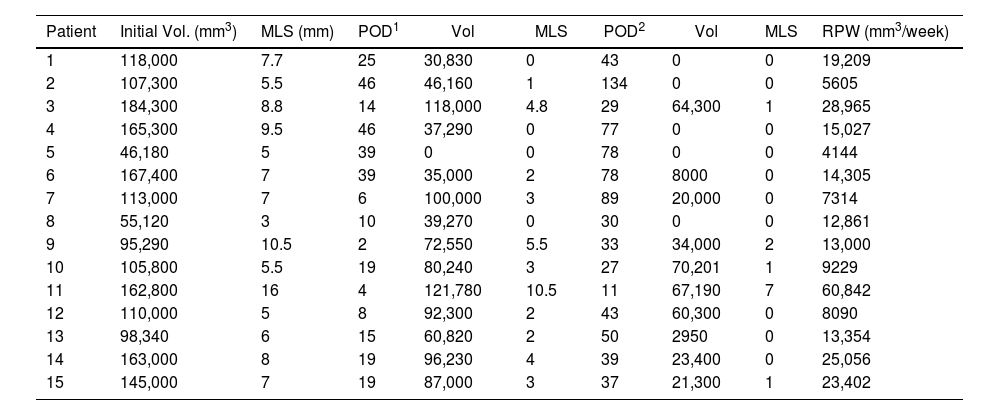Chronic subdural hematoma (cSDH) is a prevalent neurosurgical condition with an increasing incidence due to the rising life expectancy and the widespread use of anticoagulant and antiplatelet therapies. Insights into the inflammatory origins of cSDH led to the exploration of Middle Meningeal Artery (MMA) embolization as a therapeutic strategy. In recent years the endovascular treatment of MMA has gained momentum. Herein we present the initial experience of a dual trained neurovascular unit implementing this therapeutic technique.
MethodsThis single-center, prospective pilot study aimed to evaluate the feasibility, safety, and efficacy of MMA embolization in the treatment of cSDH. Following ethical approval and informed consent, demographic, clinical, and radiological data were collected. Patients requiring emergent surgical treatment were excluded. The study focused on assessing clinical outcomes, including the Modified Rankin Score (mRS) and volumetric analysis of cSDH, before and after embolization.
ResultsFifteen patients underwent MMA embolization, with a predominance of males (80%) and a mean age of 72.4 years. The most common presenting symptom was headache (53.3%). The average hospital stay was 3.9 days. Various embolization techniques were employed, with DMSO-EVOH being the most frequent. All procedures were successfully conducted without complications. Although not statistically significant, trends suggested better outcomes in patients with homogeneous cSDH on the CT scan, displaying the cotton wool sign on angiography and treated with EVOH-DMSO.
ConclusionMMA embolization for cSDH demonstrates promise as a safe and effective treatment, potentially reducing the need for surgical intervention and recurrence rates. This study lays the groundwork for a larger, randomized controlled trial which protocol is herein presented.
El hematoma subdural crónico (HSDc) es una patología neuroquirúrgica prevalente con una incidencia creciente debido al aumento de la esperanza de vida y al aumento de pacientes con tratamientos anticoagulantes y antiagregantes. Los conocimientos sobre los orígenes inflamatorios del HSDc llevaron a la exploración de la embolización de la arteria meníngea media (AMM) como una estrategia terapéutica. En los últimos años, el tratamiento endovascular de la AMM ha ganado popularidad y aceptación. Aquí presentamos la experiencia inicial de una unidad neurovascular con entrenamiento dual en la implementación de esta técnica terapéutica.
MétodosEste estudio piloto prospectivo unicéntrico tuvo como objetivo evaluar la viabilidad, seguridad y eficacia de la embolización de la AMM en el tratamiento del HSDc. Tras la obtener la aprobación del comité ético y el consentimiento informado, se recopilaron datos demográficos, clínicos y radiológicos. Se excluyeron los pacientes que requerían tratamiento quirúrgico de emergencia. El estudio se centró en evaluar los resultados clínicos, incluyendo la Escala de Rankin Modificada (mRS) y el análisis volumétrico del HSDc, antes y después de la embolización.
Resultados15 pacientes se sometieron a embolización de la AMM, con un predominio de hombres (80%) y una edad media de 72,4 años. El síntoma de presentación más común fue la cefalea (53,3%). La estancia hospitalaria media fue de 3,9 días. Se emplearon varias técnicas de embolización, siendo el DMSO-EVOH la más frecuente. Todos los procedimientos se llevaron a cabo con éxito y sin complicaciones. Aunque no fue estadísticamente significativo, se observaron mejores resultados en pacientes con HSDc de aspecto homogéneo, en aquellos que presentaban el signo del cotton-wool y en los tratados con EVOH-DMSO.
ConclusiónLa embolización de la AMM para el HSDc es una opción de tratamiento segura y eficaz, con potencial para reducir la necesidad de cirugía y las tasas de recurrencia. Este estudio sienta las bases para un ensayo controlado aleatorizado cuyo protocolo es también presentado.
Article

If it is the first time you have accessed you can obtain your credentials by contacting Elsevier Spain in suscripciones@elsevier.com or by calling our Customer Service at902 88 87 40 if you are calling from Spain or at +34 932 418 800 (from 9 to 18h., GMT + 1) if you are calling outside of Spain.
If you already have your login data, please click here .
If you have forgotten your password you can you can recover it by clicking here and selecting the option ¿I have forgotten my password¿.














